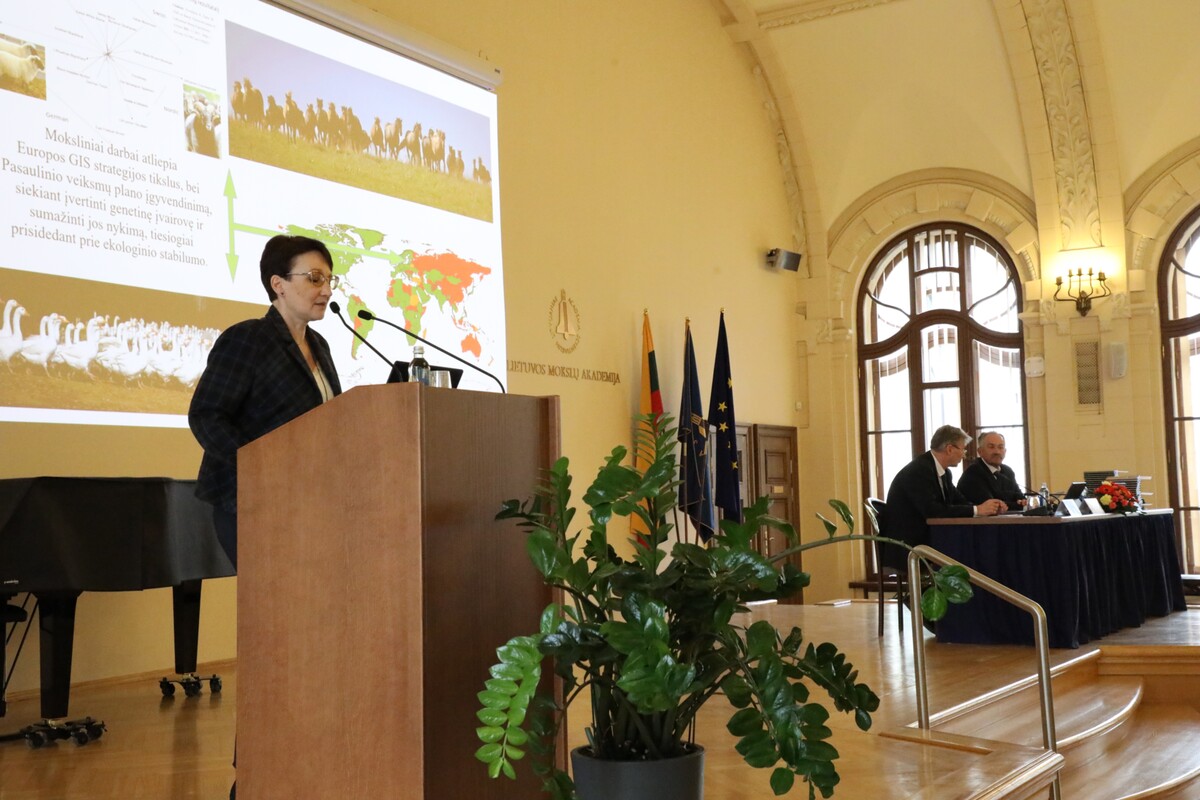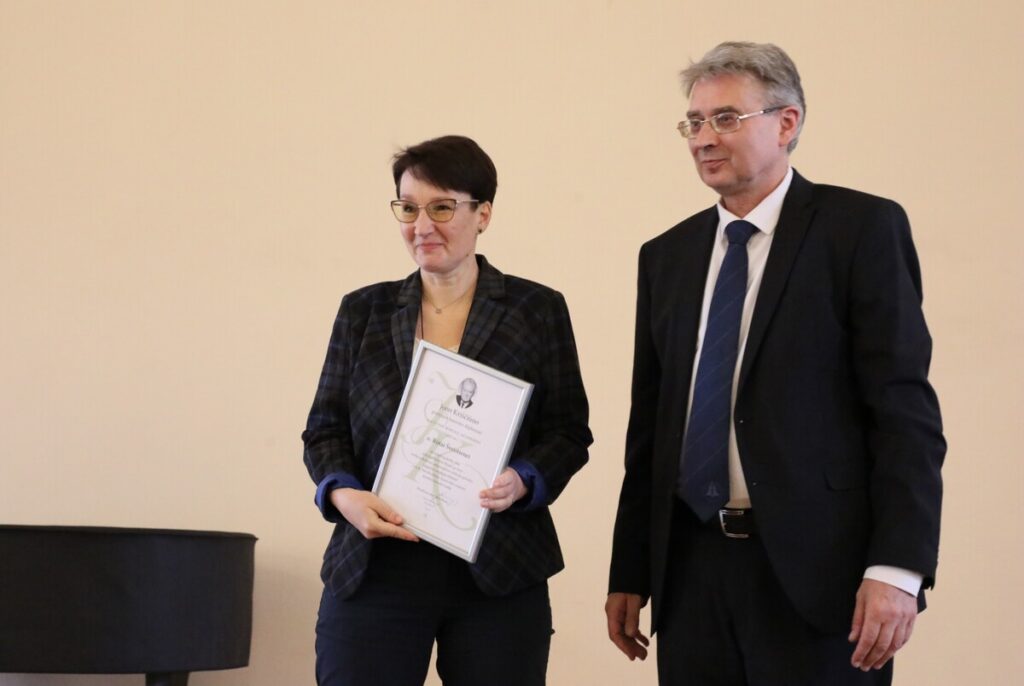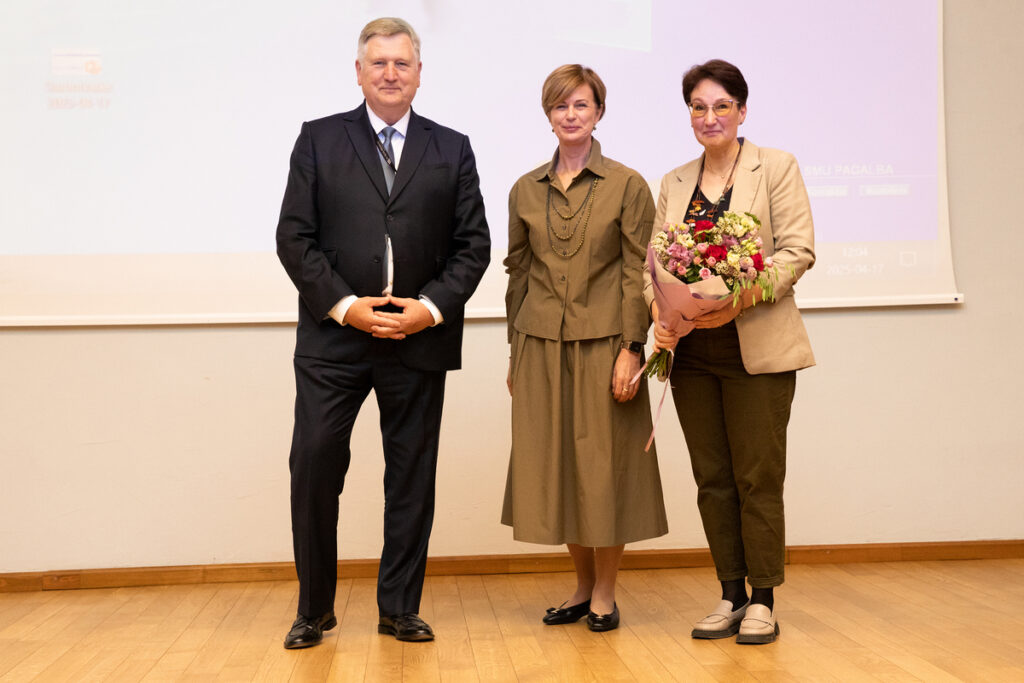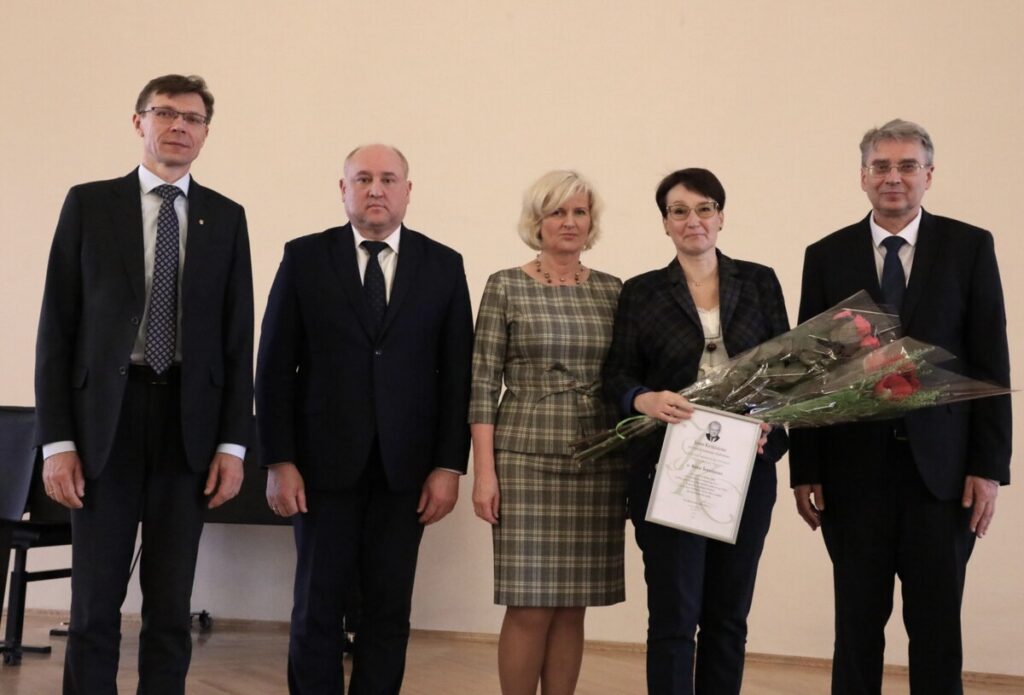Winner of the Jonas Kriščiūnas Science Prize: “You never know what the cycle of life will bring”

This spring has been rich in significant scientific recognitions and awards for the Lithuanian University of Health Sciences (LSMU), including the Jonas Kriščiūnas Prize from the Lithuanian Academy of Sciences awarded to Dr. Rūta Šveistienė, researcher at the Institute of Animal Science (LSMU Veterinary Academy) and head of the Lithuanian Farm Animal Genetic Resources Conservation Coordination Centre.
The award is the recognition of a cycle of research works by Dr. Rūta Šveistienė entitled “Local Lithuanian Farm Animals – the Uniqueness of Breeds and the Impact of Restorative Selection on the Objectives of Conservation Strategies”.
The cycle of works includes 109 articles in peer-reviewed scientific periodical publications, aiming to identify and scientifically substantiate the genetic and phenotypic characteristics of Lithuanian cattle, pigs, horses, sheep, and geese, as well as their key physiological traits. The findings have made a meaningful contribution to global understanding of farm animal genetic diversity.
More than just a profession, but also a way of life
According to Dr. R. Šveistienė, who leads the Lithuanian Farm Animal Genetic Resources Conservation Coordination Centre, this is not just a profession – this is also a way of life that provides the unique opportunity to be close to animals on a daily basis. Even after work, the researcher often finds herself unwinding in the company of animals, particularly horses of Žemaitukai breed.

“It is not just a restorative moment, but also a kind of meditation – a step away from the digital world and daily routine. Every spring feels like a miracle. You never know what the cycle of life will bring: what genetic combination might emerge, what unique traits the newborns might display. That natural, true sense of anticipation – watching, waiting, being present – is what I love the most. It is what inspires my work and my everyday life,” – says the researcher.
The Jonas Kriščiūnas Prize awarded by the Lithuanian Academy of Sciences is not only a personal honour for Dr. Šveistienė, but also a significant recognition for the entire community of the Institute of Animal Science and everyone contributing to the advancement of this field.
“In today’s world dominated by market economics and high-tech breakthroughs, we remain committed to our mission – perhaps less visible, but no less significant. We work with native animal breeds and populations, striving to understand why they are in decline and how we can preserve them for future generations.
We have a rare opportunity to apply the most advanced scientific methods to reveal the genetic distinctiveness of our animals and to monitor population trends. This research is crucial not only for Lithuania – it contributes to the protection of biodiversity across Europe and beyond.”
What have you discovered? Which findings stand out as especially significant?
The studies have revealed unique phenotypic and genetic traits of native breeds. For instance, analyses of single nucleotide polymorphism in populations of local sheep, cattle, and horses helped identify genetic distances between breeds, inbreeding variability, and gene drift effects. Population genetics analyses also showed decreasing genetic diversity in certain breeds – highlighting the urgent need to reinforce conservation strategies.
This research not only helps preserve and protect Lithuania’s genetic heritage but also contributes to global knowledge and preservation of farm animal diversity. It has also been proven that the strategies developed to restore and protect native breeds are effective, supporting sound decision-making on their future and long-term sustainability.
Among the most valuable results are also those showing that the most recent evaluation methods can successfully be applied to assess productivity traits in native breeds. For example, using the Aloka PS2 ultrasound device, researchers measured muscle thickness, assessed body constitution, and evaluated milk production traits – all to explore the potential of native cattle breeds for beef farming (raising suckler cows). These findings are practically relevant for shaping agricultural policy, breeding strategies, and genetic resource conservation.
Tell us more about your academic journey. What drew you to this field?
I have loved animals since childhood – I grew up in Kaunas, where my friends and I would rescue stray puppies and kittens, and I dreamed of having a stud farm. As a teenager, I spent summers helping a local vet and later worked at what was then Kaunas Zoo (now the Lithuanian Zoo). Veterinary studies were a natural next step.
After graduating, I joined the Institute of Animal Science and chose horses – specifically the larger Žemaitukai breed – as the focus of my doctoral research. I was fascinated by their genetics, history, and unique qualities. Later, my research expanded to other animal species and various native breeds.
This field requires patience – results do not come quickly, as they depend on generational changes – but it is deeply meaningful. It plays a vital role in safeguarding our genetic heritage. What I value most in working with animals is the life itself that underpins it – each day brings new insights and observations. It is a kind of work where everything is real: changing nature and the pulse of life constantly remind me why it matters.
What are your plans for the future?
I intend to continue delving into the genetics of native farm animals – their patterns of inheritance, the development of phenotypic traits, and their chances of long-term survival. Genetics is like a closed loop – the more you learn, the more questions arise. There is no room for boredom in this field.
I am particularly interested in epigenetics – how environmental factors influence gene expression and how these effects are passed on to offspring. This area helps us understand the complex biological mechanisms that shape animal adaptation, productivity, and even behaviour.
I believe these studies will not only support the conservation of endangered breeds but also help shape a sustainable, solid future for animal science – one where tradition, heritage, and cutting-edge biotechnology go hand in hand.


